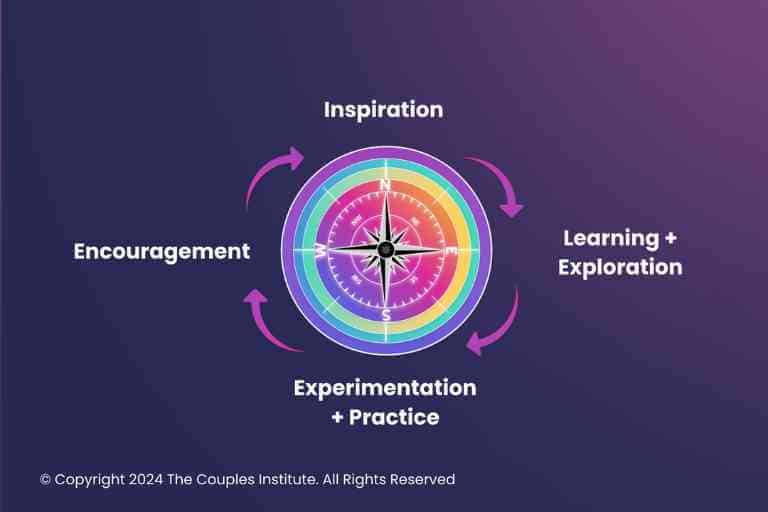
Highlights from the Psychotherapy Networker Conference
I just recently returned from the Psychotherapy Networker Symposium that took place March 22-24, in Washington, DC! As you may know, I like to share

It’s been said that the past is never really dead. All our prior experiences have the power to shape our thoughts and perceptions – which in turn influences our closest relationships.
The couples you meet with every day are dealing with issues that took root long before they came to you. Yet even after you’ve uncovered signs of past trauma in one or both partners, it’s not always clear how to help them move forward.
In some of the next posts, we’ll take a closer look at trauma and couples therapy, offering insights and techniques that will help you plan a highly effective course of treatment.
How the past distorts the present
Trauma configurational reflex is a concept that explains how, as humans, we tend to configure what we see in front of us through the lens of our past experiences. The word reflex is important here, because this usually happens automatically, beyond the realm of conscious thought.
In working with couples, you might see this show up when a partner who once endured emotional or physical abuse believes it’s happening all over again when the other partner seems upset or angry. In reality, the issue may be a small one, but the traumatized partner feels the echo of past events and suddenly feels unsafe.
In this context, it’s easy to see how communication shuts down. The traumatized partner may freeze, run away, or even lash out, leaving the other partner confused, misunderstood, and possibly even angrier than before.
Empowering couples to retool their reactions
When one or both partners are entangled in misunderstandings triggered by past trauma, the chances that they will achieve healthy differentiation are greatly diminished. As their therapist, you can help them learn to stay in the moment, using new skills to interpret each other’s messages in a more accurate and collaborative way.
The Initiator-Inquirer process helps couples learn to slow down, develop curiosity about what the other partner is saying, and check in with one another to achieve understanding. This can be an excellent process for gaining control over reflexive reactions based on past trauma. Here’s a quick review of how the process works. And here is a resource that helps couples practice this new process, both in your office and at home.
Opening the door may be as simple as explaining that healthy communication is based on exploration, which starts with asking each other lots of questions, listening carefully and reflecting back what you believe the other person has said. Success comes when couples learn to slow down and give each other the time and attention that leads to real understanding.
Mapping out a successful course of treatment
Because you’re working with patterns embedded deep in the brain, recovery from reflexive thinking may be very gradual – and that’s perfectly normal. Here are some suggestions for planning your therapeutic approach.
In our next few posts, we’ll go deeper into trauma-informed treatment for couples. Please comment on questions you have and share your experience working with trauma below.
"*" indicates required fields
 We respect your privacy.
We respect your privacy.
"*" indicates required fields
 We respect your privacy.
We respect your privacy.
I just recently returned from the Psychotherapy Networker Symposium that took place March 22-24, in Washington, DC! As you may know, I like to share

I’ve specialized in working with couples for 40 years. A “back-of-the-envelope” calculation tells me that’s about 33,000 hours of couples work. You can bet I’ve

Couples often come to therapy with high hopes, vulnerability, and a spoken desire for transformation. They also come with years of pain, hostility, and unresolved
US: +16465588656, 82302466709# or +16469313860, 82302466709#
Webinar ID: 82302466709
 We respect your privacy.
We respect your privacy.
Thanks for this article, very useful. Slowing down is indeed a key. A method which enabled slowing down and worked very well in a therapy was the three-minutes task (where both partners had to just listen to what the other is saying for three minutes, every day).
EXCELLENT POINT. Very helpful- Thank you. going slow is the main point for me to develop.
Being attuned to oneself is an important reminder. Yesterday, I noticed myself quite agitated at the level of fighting of one of my couples (one is much more differentiated than the other). With Dr Pearson’s words, I was able to interrupt and slow it down, thank goodness! This couple is definitely dealing with relationship trauma and we will be taking it super slow. I look forward to your next installment of this post. 🙂
Dear Ellyn,
I truly appreciate your endeavor in this relatively new area. Thanks a ton in advance.
In my couples therapy practice – psychosexuality is my special area of focus – I’ve been facing this problem on regular basis: One of the partners is bringing so much trauma that the other partner seeking intimacy and deeper connection faces a brick wall. “I need you, but I can’t trust you” is the common theme.
In severe cases, especially when dysfunctional personality adaptations make it more complicated I refer the more traumatised partner for trauma healing elsewhere. And in others, I am already using your I-I process. The results are amazing!
However, I’m facing certain issues:
One: How to help heal the wounds inflicted during infancy before cognitive process started developing, since everything is emotional. I’m not clear how to take the I-I process to that depth.
Two: Trauma is stored in the body, and the deeply traumatised people are disembodied to numb their pain for survival. How to help them reconnect to their bodies has been a challenge for me. Daring to be deeply vulnerable while the partner is attuned is one way, but I’m still unclear how to use it effectively.
Three: Childhood trauma is so pervasive that oftentimes I find both partners are too severely traumatised and disembodied to support each other. In such cases can approaches like deep somatic re-experiencing be undertaken in a couple set up? Or do you have anything in your I-I repertoire?
I am sure you will cover these issues in your series.
Warmest regards,
Vinod
Dear Ellyn. Thank you for this well-thought-out approach. I missed it when you initially sent it out in late April. I am very glad I found this when I took the time to go through some of my unread emails. I will be utilizing this very soon. Thank you, again.